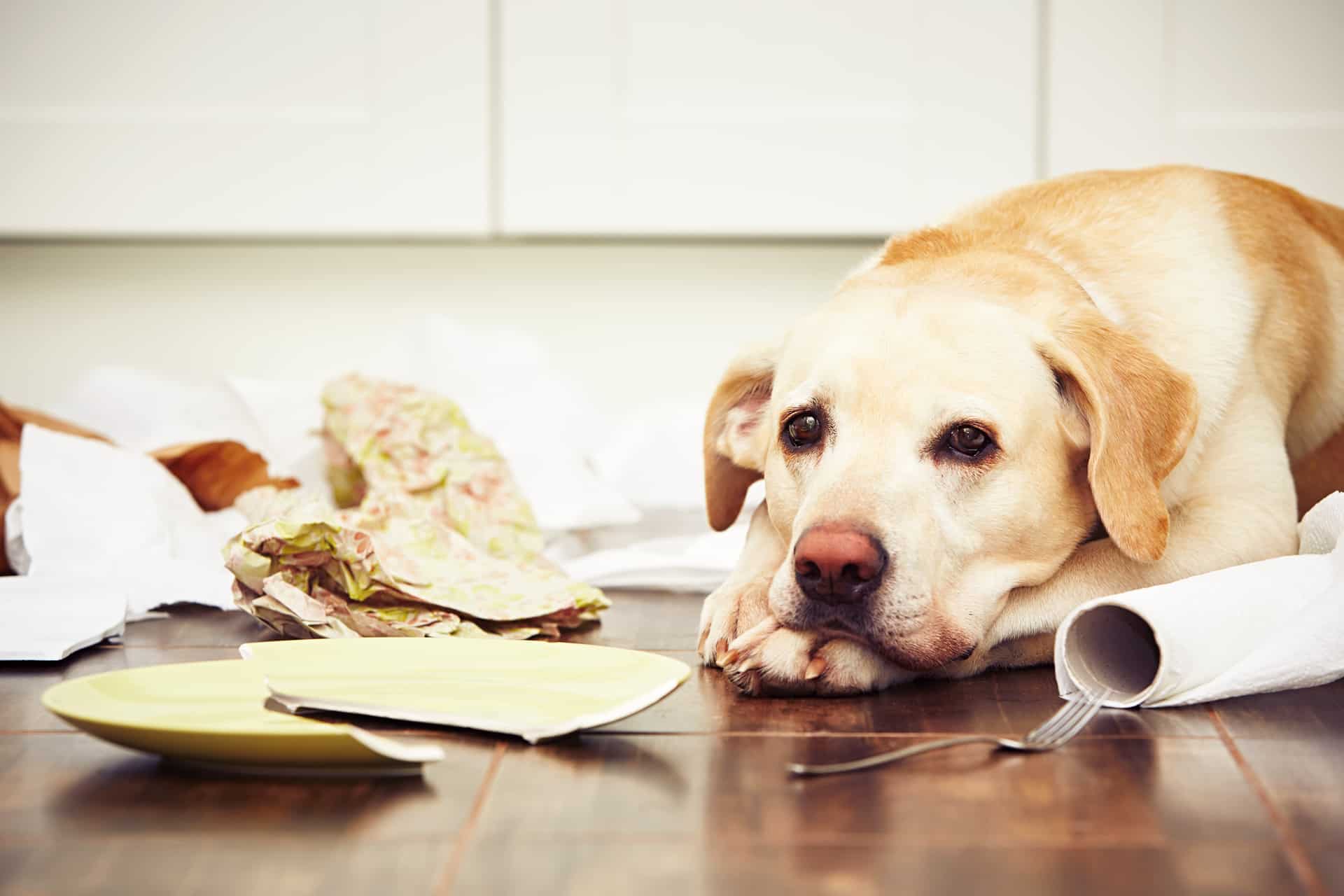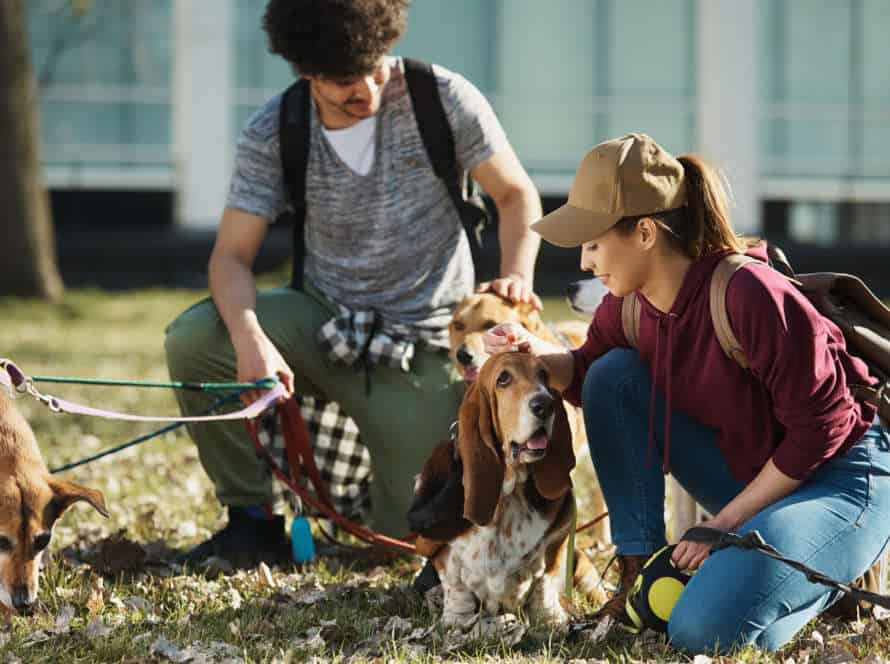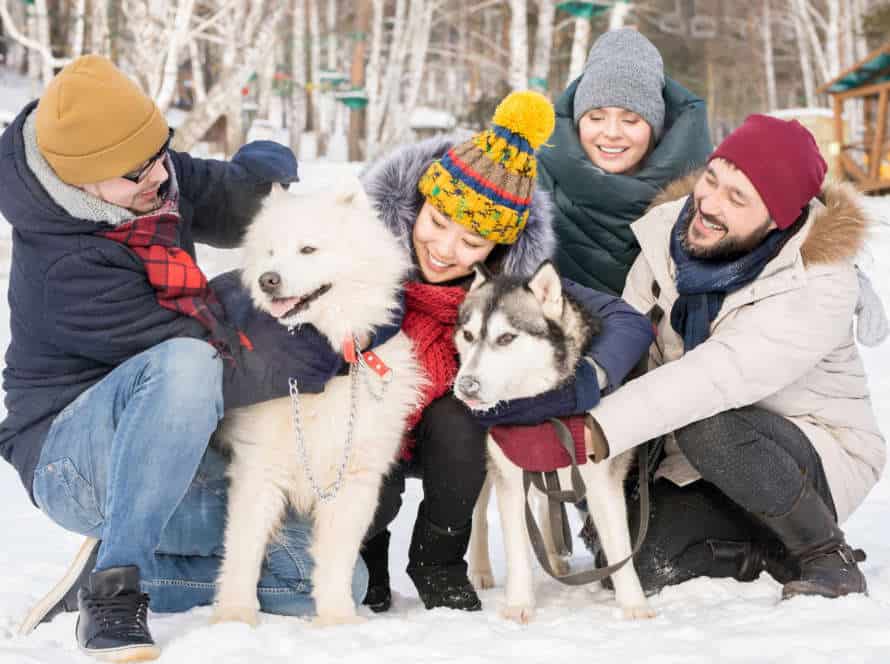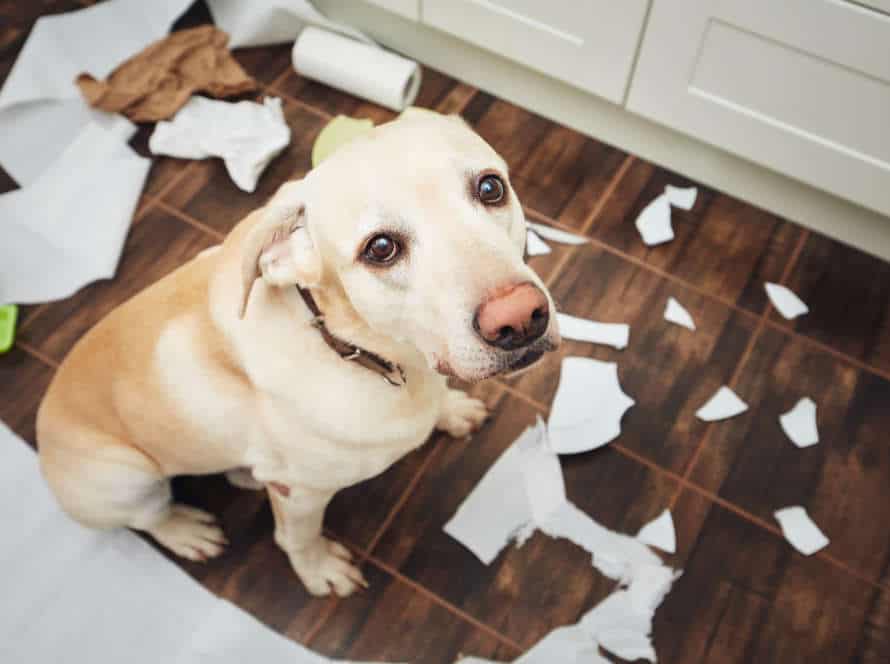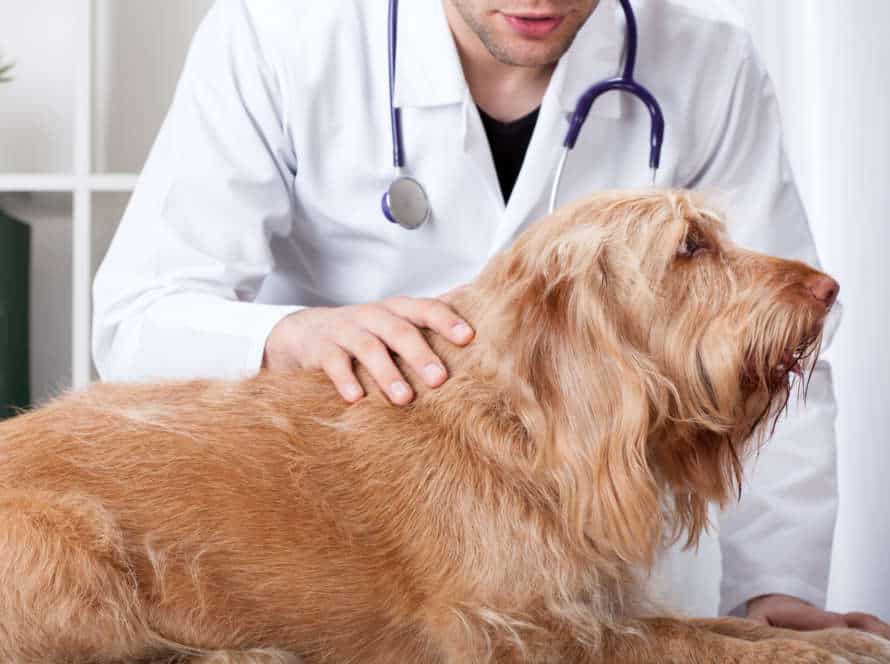Household Hazards: Common Items That Can Harm Your Dog
Household Hazards: Common Items That Can Harm Your Dog
As a dog owner, watch out for common items in your home that could be dangerous or harmful to your pup. Here are a few to look out for:
- Chocolate: Contains theobromine, which can be toxic in large amounts. Symptoms of poisoning include vomiting, diarrhea and seizures.
- Plants: Lilies, tulips and chrysanthemums can be poisonous. Symptoms vary but can include vomiting, diarrhea and lethargy.
- Medications: Over-the-counter and prescription drugs can be bad if ingested. Painkillers, sleep aids and antidepressants can be toxic in high doses.
- Cleaning Products: Bleach, ammonia and disinfectants can cause harm if inhaled or ingested. Symptoms may include vomiting, diarrhoea and breathing problems.
Take care to keep these items away from your pooch to keep them safe and healthy!
Foods That Can Harm Your Dog
Take care! Some household items, like food, can be hazardous for your pup. Many of the everyday foods we eat can be dangerous or even fatal for our doggos. Knowing which foods to avoid can help us prevent accidents and keep our pets safe. Let’s take a look at some of the most risky foods that may harm our furry pals.
Chocolate, caffeine and alcohol
Chocolate, caffeine, and alcohol are dangerous for your pup. Each can cause toxicity that ranges from digestive trouble to seizures and even death.
Chocolate has a compound called theobromine that is toxic for dogs. Warning signs include: vomiting, diarrhea, dehydration, hyperactivity and heart failure.
Caffeine is a stimulant that can be found in coffee, tea, chocolate and some sodas. It can cause restlessness, rapid breathing, heart palpitations, muscle tremors and seizures.
Alcohol is super toxic to dogs and even small amounts can cause vomiting, diarrhea, disorientation and breathing issues. In serious cases, it can lead to coma or death.
Remember: keep all chocolate, caffeine, and alcohol away from your pup and contact your vet if you suspect they have ingested any of these!
Grapes, raisins, and currants
Grapes, raisins, and currants are all common household foods. However, they can be dangerous to your dog if ingested. These foods contain toxins that can cause kidney failure, even in small amounts.
If your dog has eaten any of these foods, you may notice symptoms such as vomiting, diarrhea, lethargy, and decreased appetite. If this occurs, contact your veterinarian immediately.
Treatment for grape or raisin toxicity may include inducing vomiting and administering activated charcoal to absorb the toxin. Veterinary care may also involve supportive care such as intravenous fluids and medications.
The best way to prevent grape or raisin toxicity is to keep these foods away from your dog. Be sure to be mindful of other household hazards that can harm your furry friends.
Onions, garlic, and chives
Onions, garlic, and chives are known to harm dogs. They contain compounds that can damage red blood cells and cause anemia.
Symptoms of poisoning may appear days after ingestion. These include: weakness, vomiting, breathing difficulties and increased heart rate.
It’s vital to keep these foods away from your pet to avoid accidental intake. If your dog has eaten any of these plants, contact your vet. They may suggest a blood or urine test to check for damage.
Vigilance and precaution is the key to keeping our furry friends healthy.
Household Items That Can Harm Your Dog
Pet safety is key! Know the dangers of everyday household items. Cleaners, human meds, and plants can be toxic to dogs. To keep Fido safe, here’s the lowdown on the most common hazards:
- Cleaners: Store away safely and out of reach.
- Human Meds: Keep away from your pet.
- Plants: Research which ones are toxic.
Cleaning products
Cleaning products are a must for a healthy home, but certain chemicals in them can harm your four-legged companion. Here are some examples:
- Bleach: Can cause skin irritation, respiratory issues, and even liver damage.
- Ammonia: Respiratory and stomach problems can result from exposure.
- Oven cleaner: Burns and respiratory issues can occur if ingested or inhaled.
- Furniture polish: Skin irritation or chemical burns might result from contact.
To keep your pup safe, read product labels carefully and store securely away from your dog. When cleaning, make sure your pooch is in a separate, safe space.
Medications, supplements, and vitamins
It’s important to be aware of substances that can be dangerous for your pup. Even everyday items can harm them! These are some things to be cautious of:
- Aspirin and ibuprofen: These can cause stomach ulcers and kidney damage.
- Acetaminophen: Dogs are more sensitive than humans and large doses are fatal.
- Vitamin D: Too much can lead to kidney failure.
- Iron supplements: Stomach upset and liver damage can result.
Always check with your vet before giving anything, and keep these items away from your dog.
Essential oils and diffusers
Essential oils and diffusers are a household item. But, they can be dangerous for dogs if used wrongly. People can benefit from these oils, but dogs’ sensitive noses make them vulnerable to their negative effects.
Certain essential oils can be toxic to dogs if ingested or if their skin or respiratory system comes in contact with them. Diffusers with essential oils can also release particles in the air that can irritate a dog’s lungs or cause allergies.
To keep your dog safe, avoid using the following essential oils: Tea tree oil, Peppermint oil, Citrus oils, Cinnamon oil.
If you wish to use essential oils, keep them away from your dog, and make sure the room is well-ventilated. If your dog has any adverse reactions after diffusing essential oils, stop using them and call your vet.
Plants That Can Harm Your Dog
Ever pondered if the plants in your home can hurt your pup? Sadly, many regular houseplants can be unhealthy for your pet if they eat them. Here we’ll explain some common plants that can be risky if your dog gets hold of them. Take note!
Common toxic plants
We love having plants in our homes, but some can be dangerous to our furry friends. Here are some common poisonous plants to look out for if you own dogs:
- Aloe vera
- Azaleas and Rhododendrons
- Daffodils
- Lilies
- Tulips
- Pothos
- English Ivy
- Snake Plant
- ZZ Plant
- Jade Plant
It’s important to keep these plants away from dogs. If your dog has eaten any of these plants or has any symptoms such as vomiting, diarrhea, or abdominal pain, visit a vet quickly. Knowing these toxic plants can help keep our furry friends safe and avoid vet trips.
Symptoms of plant poisoning
Plant poisoning can be hazardous to humans and pets, like dogs. If pups consume plants that have toxic substances, they can develop dangerous symptoms. Here are some common signs:
- Vomiting/diarrhea
- No appetite
- Tiredness/weakness
- Difficult breathing
- Excessive thirst/peeing
- Stomach pain/discomfort
- Irregular heartbeat/palpitations
- Abnormal behaviour (e.g. aggression/depression).
If you see any of these after your pup eats a plant, seek vet help ASAP. It’s important to figure out which plant caused the poisoning to get the right treatment. Pro tip: Research plants in your home/yard to make sure they’re safe for your pets.
Treatment for plant poisoning
Plant poisoning in dogs can happen if they eat certain plants. Signs of this include:
- vomiting
- diarrhea
- abdominal pain
- tiredness
Treatments for this are:
- Inducing vomiting in the dog (by vet) within 30 minutes of eating.
- Giving activated charcoal to absorb toxins.
- Hospitalization in serious cases.
If you think your pup ate something poisonous, get help from a vet fast! Common toxic plants include lilies, tulips, and daffodils. Avoid these plants and research toxicity levels of others near your home. Prevention is key!
Outdoor Hazards That Can Harm Your Dog
Be aware of outdoor threats that could cause harm to your pup! Dangers can come from plants, antifreeze and more. Here’s a list of the most common outdoor hazards. Keep these in mind to ensure your pup is safe.
- Plants – Some plants can be toxic to dogs if ingested, such as sago palms, lilies, and azaleas.
- Antifreeze – This liquid may be appealing to dogs due to its sweet smell and taste, but it is highly toxic and can cause kidney failure.
- Ticks – These blood-sucking parasites can transmit diseases to dogs, such as Lyme disease and Rocky Mountain spotted fever.
- Snakes – Venomous snakes can pose a serious threat to dogs when they are out on hikes or walking in areas with tall grass.
- Heatstroke – Dogs can easily suffer from heatstroke in hot and humid weather, so it’s important to keep them cool and hydrated and avoid leaving them in parked cars.
Pesticides, fertilizers, and weed killers
Pesticides, fertilizers, and weed killers can be dangerous for your dog. They contain chemicals which can cause vomiting, diarrhea, lethargy, seizures, and even death.
To keep your pup safe, you should:
- Store these products away from them – in a locked cabinet or shed.
- Opt for natural, pet-friendly alternatives like vinegar or neem oil.
- Keep your dog inside when using products and off treated areas for 24 hours.
- Read the labels and follow instructions.
By following these tips, you can ensure a safe environment for your furry companion, while still having a beautiful garden.
Garden plants that are hazardous to dogs
It’s great for your furry friend to play in the garden, however, it can be hazardous. Many garden plants are toxic to dogs and can cause vomiting, diarrhea, and even death. Here’s a list of common garden plants that can be harmful:
- Azaleas – these plants contain toxins which cause vomiting, diarrhea, and collapse/coma in extreme cases.
- Daffodils – all parts of this plant, including the bulbs, can cause vomiting, diarrhea, and heart problems.
- Sago palm – toxins in this plant can cause vomiting, diarrhea, seizures, and liver failure/death in extreme cases.
- Tulips – toxins in these can cause vomiting, diarrhea, and convulsions/death in severe cases.
- Oleander – the flowers, leaves, and stems contain toxins that can cause vomiting, diarrhea, and heart problems.
As a pet owner, it’s important to be aware of these risks and take steps to protect your pup while they are in the garden. A tip: keep your dog out of the garden when the plants are blooming to avoid any issues.
Insect bites and stings
Insect bites and stings can harm your pup. Common ones include bees, wasps, ants, mosquitoes, and ticks. Symptoms? Pain, swelling, itching, redness, and in serious cases, breathing difficulty, anaphylactic shock, and death. To prevent these, use natural insect repellents like apple cider vinegar, coconut oil, and eucalyptus oil. Cleanliness is key too. If your pup is stung or bitten, use cold compresses, anti-inflammatory meds, and vet care if needed.
First Aid for Household Hazards
Be aware of household hazards to protect your dog! Knowing first aid for common dangers is important too. In case of an emergency, you’ll have the right help ready. Here are the items that can harm your pet, plus first aid measures you should take:
Knowing when to induce vomiting
It’s important to know when to make your dog throw up. It can be an effective way to stop toxic substances from entering their system. Here are tips on when and how to do it.
When To Induce Vomiting:
- If your dog ate something toxic like chocolate, grapes or human pills.
- If a foreign object like a small toy was swallowed.
When Not To Induce Vomiting:
- If caustic substances such as bleach or gasoline were ingested.
- If your dog is unconscious or having trouble breathing.
How To Induce Vomiting:
- Use 3% hydrogen peroxide. The dosage is 1 tablespoon per 10 pounds.
- Mix the hydrogen peroxide with food or water.
- Wait 10-15 minutes for your dog to vomit.
- If it doesn’t happen, repeat the process.
Treating burns and scalds
Burns and scalds need quick action to stop extra injury and troubles. First, figure out the intensity. These are the steps to take:
- Work out the severity of the burn: first-degree, second-degree, or third-degree?
- Cool it down: Put cool water on the affected area for 10 minutes, to reduce pain and swelling.
- Protect the wound: Cover with a sterile, non-stick dressing to stop infection.
- Ease the pain: Take over-the-counter meds like acetaminophen or ibuprofen to help.
- Get medical help: Third-degree burns need urgent medical attention. Second-degree burns need help if larger than 2-3 inches, or if it’s in a sensitive area like face or genitals.
Pro Tip: Always have a first-aid kit at home, for any medical emergency.
Immediate actions for ingestion of hazardous items
Ingestion of unsafe household items by your pup is a serious problem. Take these actions immediately to reduce the harm done:
- Stay calm and figure out what was eaten and how much.
- Contact the vet or pet poison control center ASAP.
- Mix 1 tablespoon of 3% hydrogen peroxide with water. Give 1 teaspoon for every 5 pounds of bodyweight.
- Watch your pup for signs of distress. Vomiting, diarrhea, seizures, etc. If seen, take pup to vet immediately.
- Stop future incidents by keeping hazardous items away from pup. Store in a secure cabinet or out of reach.
Frequently Asked Questions
Q. What are some common household items that can harm my dog?
A. Some common household hazards for dogs include toxic plants, cleaning products, medications, certain human foods, and sharp objects.
Q. What symptoms should I look out for if my dog has been exposed to a household hazard?
A. Symptoms of exposure to household hazards in dogs can vary depending on the type of toxin or item. Some common symptoms include vomiting, diarrhea, seizures, difficulty breathing, and lethargy.
Q. How can I prevent my dog from being exposed to household hazards?
A. Some tips for preventing household hazards for dogs include keeping toxic items out of reach, securing trash bins, and being aware of the plants in and around your home. It is also important to store all medications and cleaning products in secure cabinets or drawers.
Q. What should I do if my dog has been exposed to a household hazard?
A. If you suspect your dog has been exposed to a household hazard, it is important to seek veterinary care immediately. If possible, bring the item or toxin with you to the vet for identification.
Q. Can certain human foods be dangerous for dogs?
A. Yes, certain human foods can be dangerous for dogs. Foods such as chocolate, grapes, onions, and garlic can be toxic for dogs and should be avoided.
Q. Are there certain breeds that are more susceptible to household hazards?
A. No, all breeds of dogs are equally susceptible to household hazards. However, some dogs may be more curious than others and may be more likely to investigate and potentially ingest harmful items.

